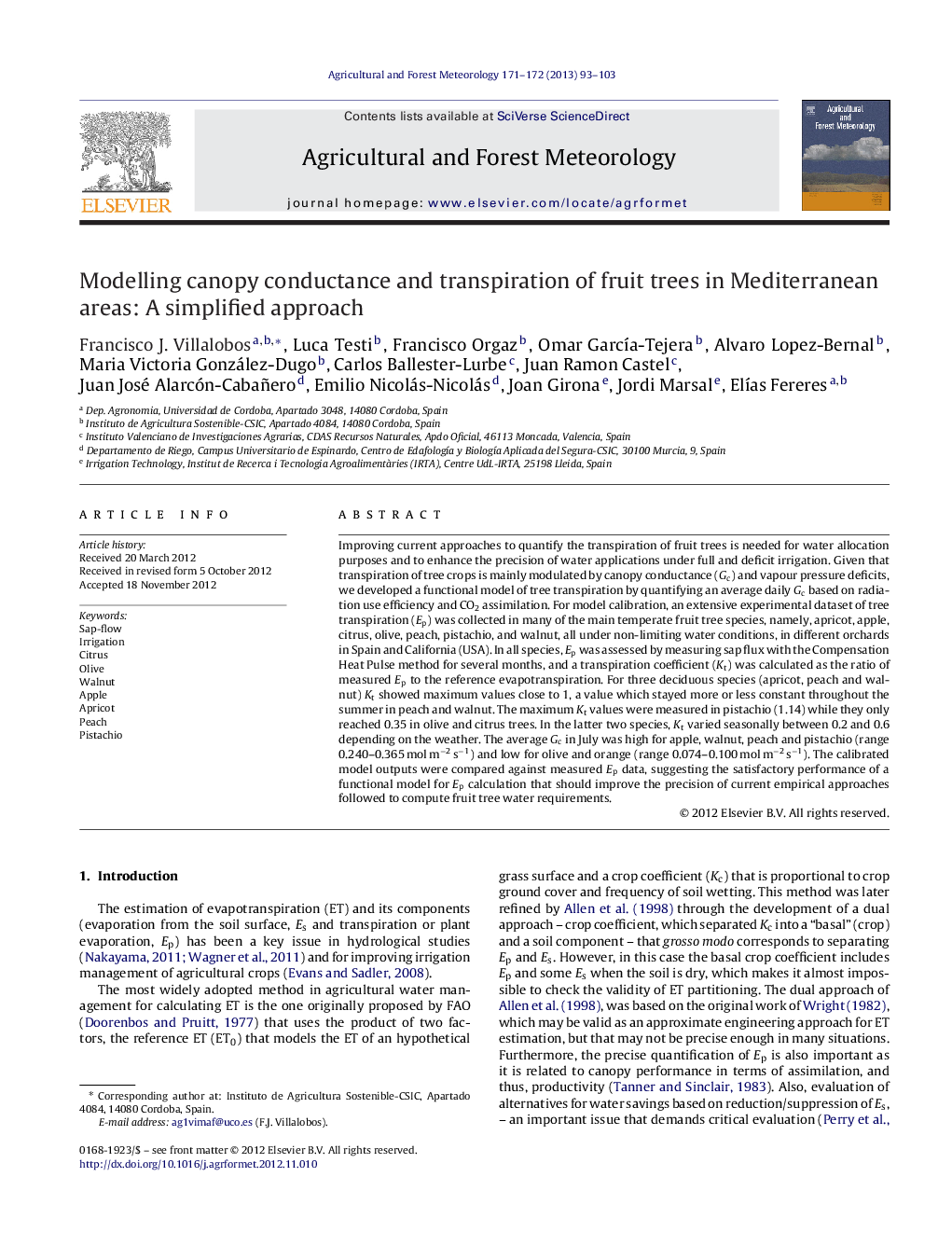| Article ID | Journal | Published Year | Pages | File Type |
|---|---|---|---|---|
| 81846 | Agricultural and Forest Meteorology | 2013 | 11 Pages |
Improving current approaches to quantify the transpiration of fruit trees is needed for water allocation purposes and to enhance the precision of water applications under full and deficit irrigation. Given that transpiration of tree crops is mainly modulated by canopy conductance (Gc) and vapour pressure deficits, we developed a functional model of tree transpiration by quantifying an average daily Gc based on radiation use efficiency and CO2 assimilation. For model calibration, an extensive experimental dataset of tree transpiration (Ep) was collected in many of the main temperate fruit tree species, namely, apricot, apple, citrus, olive, peach, pistachio, and walnut, all under non-limiting water conditions, in different orchards in Spain and California (USA). In all species, Ep was assessed by measuring sap flux with the Compensation Heat Pulse method for several months, and a transpiration coefficient (Kt) was calculated as the ratio of measured Ep to the reference evapotranspiration. For three deciduous species (apricot, peach and walnut) Kt showed maximum values close to 1, a value which stayed more or less constant throughout the summer in peach and walnut. The maximum Kt values were measured in pistachio (1.14) while they only reached 0.35 in olive and citrus trees. In the latter two species, Kt varied seasonally between 0.2 and 0.6 depending on the weather. The average Gc in July was high for apple, walnut, peach and pistachio (range 0.240–0.365 mol m−2 s−1) and low for olive and orange (range 0.074–0.100 mol m−2 s−1). The calibrated model outputs were compared against measured Ep data, suggesting the satisfactory performance of a functional model for Ep calculation that should improve the precision of current empirical approaches followed to compute fruit tree water requirements.
► Eight extensive datasets of sap flow in seven fruit tree species were collected. ► A simple model of tree transpiration based on intercepted radiation was calibrated for each species. ► The model is focused to calculate transpiration for irrigation scheduling purposes.
